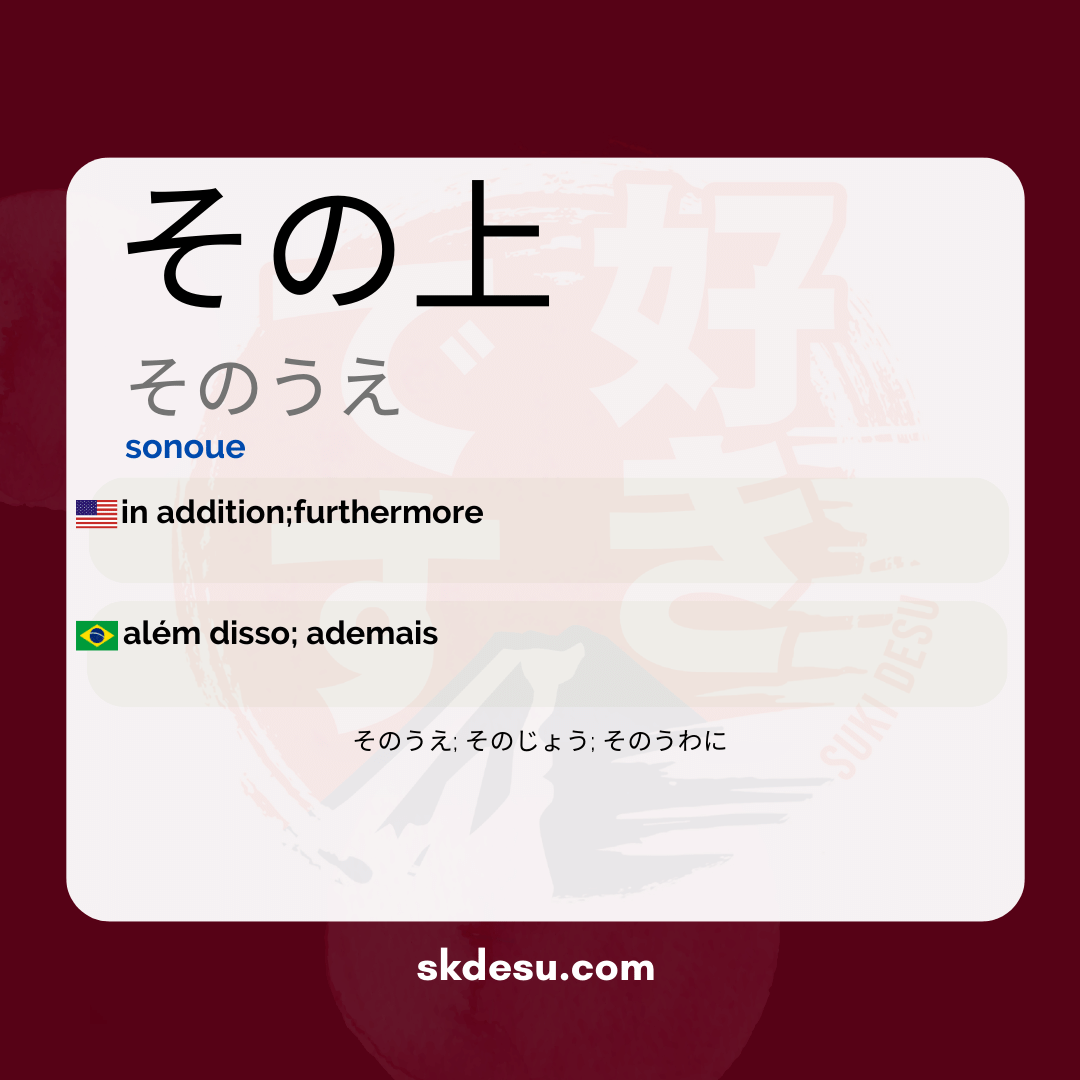Translation and Meaning of: その上 - sonoue
The Japanese word その上 [そのうえ] is a versatile term that frequently appears in both everyday conversations and formal texts. If you are studying Japanese, understanding its meaning, use, and nuances can be essential for communicating more naturally. In this article, we will explore everything from the basic translation to cultural contexts and practical memorization tips.
In addition to being a useful expression for connecting ideas, その上 carries particularities that reflect aspects of the Japanese language. Whether in daily conversations or in written materials, knowing its uses helps to avoid common mistakes. Let's unveil all of this clearly and directly, without unnecessary complications.
Meaning and translation of その上
In Portuguese, その上 can be translated as "furthermore," "moreover," or "on top of that." It serves as a connector that adds information to an already mentioned idea, reinforcing or expanding an argument. For example, if someone says a place is beautiful and, その上, quiet, they are emphasizing two positive qualities in succession.
It is worth noting that this word does not indicate contrast, like "but" or "however." Its role is always additive, never oppositional. In English, it would be equivalent to "moreover" or "on top of that," expressions that also accumulate ideas without contradicting them. This function makes it common in detailed explanations or listings of benefits.
Everyday use and practical examples
In daily life, the Japanese use その上 to emphasize advantages, disadvantages, or additional characteristics. A seller might say that a product is durable and, その上, economical. In negative contexts, someone might complain that the day was hot and, その上, humid. The construction always follows this logic of accumulation.
It is interesting to note that, although it is a common expression, その上 appears more in semi-formal or written situations than in very casual conversations. Among friends, Japanese people sometimes opt for shorter or more informal variations. Nevertheless, mastering its use is valuable for those who want to sound polished and clear in different situations.
Tips for memorization and curiosities
An effective way to remember その上 is to associate it with situations where you list additional points. Think of sentences like "she is smart, and besides that (その上), hardworking." Mentally repeating this structure helps to engrave the function of the word. Another tip is to observe its use in dramas or articles in Japanese, as it appears regularly.
Interestingly, the composition of その上 is literally "this" (その) + "above" (上), which reflects its sense of addition well. Although it is primarily written in hiragana today, knowing the original kanji can help in understanding the meaning. This is one of those words that, once learned, start to stand out in various contexts.
Vocabulary
Expand your vocabulary with related words:
Synonyms and similar words
- そのうえ (sono ue) - besides that
- そのじょう (sono jō) - in addition; on top of that (more formal)
- そのうわに (sono uwani) - on top of that; additionally (less common)
Romaji: sonoue
Kana: そのうえ
Type: adverb
L: jlpt-n2, jlpt-n1
Translation / Meaning: besides; moreover
Meaning in English: in addition;furthermore
Definition: Sorry, I need a clarifying question. For which word or phrase do you need definitions?
Quick Access
- Vocabulary
- Writing
- Sentences
How to Write in Japanese - (その上) sonoue
See below a step-by-step guide on how to write the word by hand in Japanese. (その上) sonoue:
Example Sentences - (その上) sonoue
See below some example sentences:
Nenhum resultado encontrado.
Other Words of this Type: adverb
See other words from our dictionary that are also: adverb

